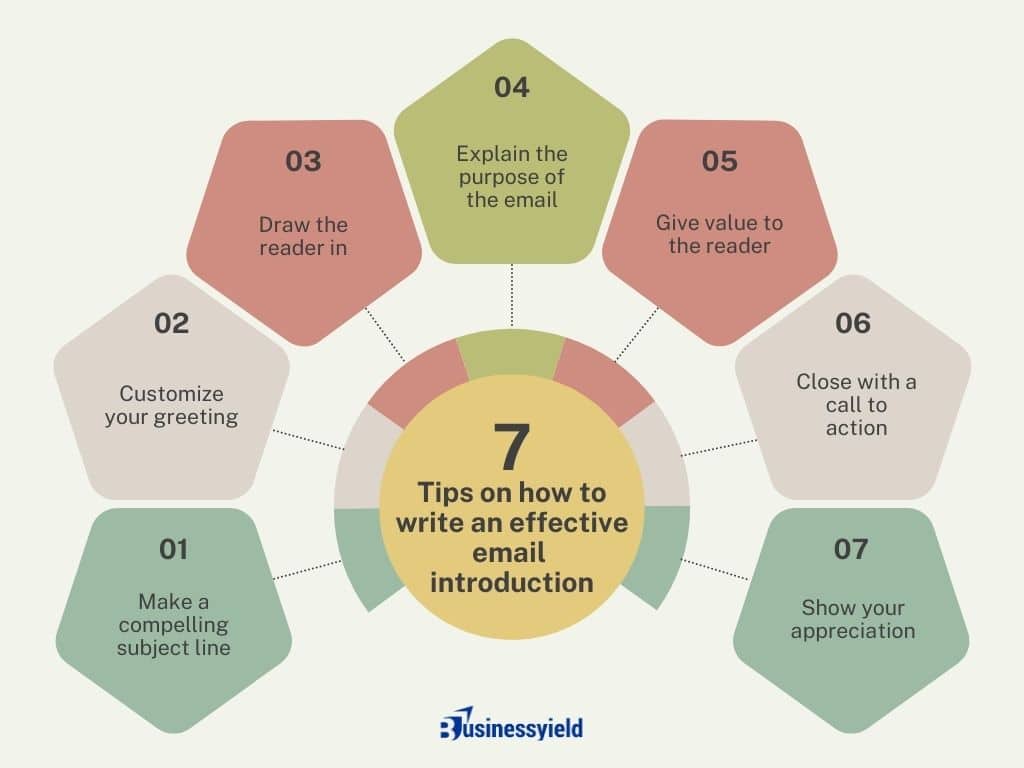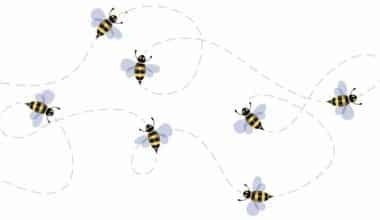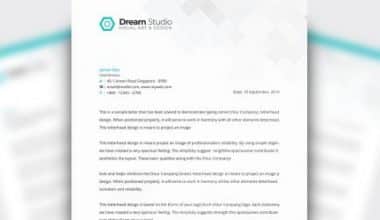Let me guess; you’re writing an email or preparing a speech and you just used “By Way of Introduction”, and now you are wondering if it’s correct to use or not. Probably just a feeling, or because the more you stare at the phrase, the less sense it seems to make in any context. Well, if it’s the latter, then I’ve got a surprise for you because that’s actually applicable to any word.
Oh, you don’t believe me? Pick any word, then – any word – and stare at it. Stare at it, like you’re trying to dissect it with your eyes. You’ll see that the more you do so, the less sense the word starts to make, almost like you’re stripping away its meaning with your gaze. And just in case you’re wondering why or how, well, do you know that all words are made up? Yes, all words; even your name.
However, I digress; this is not a grammar class. Or maybe it is; you’re here to check the veracity of a word, after all. You can rest assured that “By Way of Introduction” is entirely appropriate for use, particularly in more formal settings like email correspondence or presentations.
Key takeaways
“By way of introduction” is a phrase you can use when introducing a new person.
It is a versatile and useful phrase for formal contexts to establish a professional and academic tone.
It is grammatically correct, though some argue it’s quite pretentious as it uses too many words to introduce yourself.
Fewer words, such as “I am (name),” can do the trick.
What does “By Way of Introduction” mean?
Adopting appropriate language and adhering to grammatical correctness is essential for maintaining professional standards. This makes “By Way of Introduction” a versatile tool in your communication arsenal, particularly when it comes to formal settings.
To use “By Way of Introduction” effectively, you must understand the best scenarios for its application. As a prepositional phrase, it is typically reserved for formal introductions, particularly in written correspondence such as emails and business documents. When using this phrase, make sure to immediately follow it with a complete sentence, which will ideally set the stage for the content or context that follows. Pairing it with an explanatory statement not only offers clarity but also creates a cohesive thought.
It can be used to introduce yourself, your role within an organization, or a specific topic to be elaborated upon throughout your correspondence. However, its usage largely depends on the context, as it may sound overly formal in casual conversations.
It’s worth noting that “By Way of Introduction” also holds potential pitfalls. When used excessively or out of context, it can lead to verbosity — detracting from the intended message. To prevent this, use the phrase judiciously and incorporate it into settings where it is an appropriate fit.
Situations that best fit “By Way of Introduction”
“By Way of Introduction” works well in certain formal contexts where a well-structured, courteous, and official tone is expected. These include:
Professional emails & formal introductions
When introducing yourself or a team to new coworkers or clients, you can use “By Way of Introduction” to set the right tone in the context of professional emails and business communication. It creates a structured message that demonstrates professionalism and good manners.
However, note that while this phrase offers a variation in lexical choices, it should be used judiciously based on the context, as other introduction phrases may also be suitable.
For example:
“By Way of Introduction, I would like to present our team’s project manager, Jimmy Arnis.”
Introducing concepts & topics in writing
“By Way of Introduction” can also be utilized effectively in formal writing when presenting a new concept or subject within a business proposal, research paper, or any other document that requires formal language. It establishes a sense of importance and serves as a transition into the new topic.
By carefully selecting your wording or lexical choices, you can create a smooth and engaging flow in more formal writing. Remember to place this phrase at the beginning or in the middle of a sentence. Also, occasionally follow it with a secondary prepositional phrase for emphasis or elaboration.
Example: “By Way of Introduction, we would like to present the latest innovation in our product line: the eco-friendly solar charger.”
Example: “The study of climate change requires a thorough understanding of various factors. By Way of Introduction, we will first explore the impact of greenhouse gases on global temperatures.”
Overall, “By Way of Introduction” is a versatile and useful phrase for formal contexts. It helps establish a professional and academic tone when introducing oneself, a team, or specific concepts and topics across various mediums, such as in emails, presentations, or writing.
Academic settings & conference speeches
This is another setting where “By Way of Introduction” fits well. It often serves as a segue into the main topic or theme of a lecture or presentation and assists the speaker in creating a clear presentation structure while maintaining formal academic language.
Use this phrase at the beginning of your speech to enrich the discussion and aid listeners in better understanding the topic at hand. Then, follow it up with contextual examples like video clips or live demonstrations.
For example:
“By Way of Introduction, let us watch this brief video on the current state of the supply chain industry before we go into more detail about the topic.”
Below is a template that you can adapt to use “By Way of Introduction” in an email:
By Way of Introduction Email Template
“By Way of Introduction” in email etiquette
The art of crafting a standout email begins with mastering the perfect email subject lines, greetings, and opening lines. Enhancing email etiquette through effective email communication and using appropriate opening lines shows professionalism and consideration for your recipient’s time and attention.
You can do this by:
Crafting effective subject lines
Creating an impactful subject line is crucial to recipient engagement and ultimately decides whether your email gets opened or ignored. To elevate open rates, incorporate personalized, intriguing, or curiosity-provoking subject lines.
Studies suggest that using the recipient’s name or adding digits in the subject line can boost the likelihood of the email being opened.
Personalized greetings
To uphold a professional tone in your email, tailor the greetings to be in line with the norms and standards of the recipient’s industry. Choosing between formal salutations like “Dear” and more casual openings such as “Hi” or “Hello” should be based on the level of formality expected in the recipient’s field.
You can achieve personalized communication by addressing the recipient by their first name. This not only adds a personal touch but also demonstrates thoroughness and attention to detail.

Constructing a clear & relevant message
You must ensure that the email contains a clear, relevant, and concise message. This is paramount to maintaining your recipient’s interest.
Begin with targeted messaging that directly pertains to their achievements or interests. To inspire reciprocation and positive responses, include specific reasons for reaching out and offer value upfront. Lastly, end the message with a thank-you and a concise closing to show respect for the recipient’s time and attention.
- Use captivating lines that capture attention.
- Be relatable by mentioning shared interests or achievements.
- Offer value in your email, like a helpful resource or expert advice.
By following these guidelines and incorporating “By Way of Introduction” into your email etiquette when suitable, your emails will not only exhibit professionalism but will also be more engaging and memorable.
“By Way of Introduction” alternatives
Phrases like “by way of introduction” are unnecessary in most cases. They are over the top, and sometimes, people will judge you for using them.
There are other ways of introducing yourself without using “By Way of Introduction”. These phrases are great as they allow you to send an introductory email to new coworkers when you have yet to speak to them personally.
They include:
I am
“I am” is the simplest example of another way to say “by way of introduction.” You should use it before you include your name or job role. This will let everyone reading the email know what you’re about and what to expect from you.
“I am” uses two words compared to “by way of introduction” using four, making it much more concise. It also sounds less braggy and pretentious, making it more ideal when you’re trying to appear polite and respectful. Here’s an example:
Dear all,
I am Jimmy, the new head of the Sales department. I’m keen to meet you all over the coming weeks to see how the company works.
All the best,
Jack Waters
To Introduce Myself
“To introduce myself” is a great phrase that shows your intention directly. It keeps the verb in the infinitive form to let people know what you plan to do in your email. This will give most people a chance to get to know you based on what you say after “to introduce myself.”
As synonyms go, this is a great choice in formal emails. It shows you want to introduce yourself to people directly. Usually, this is done outside of emails, meaning that you’ve set up a plan to see everyone in person.
Dear team,
I’m happy to make your acquaintance. To introduce myself, I’d like to invite you all to my office to have a brief meeting.
I’m Pleased to Meet You
“I’m pleased to meet you” is a very polite introductory phrase. You should use it as part of your greeting in a formal email if you want to appear friendly and approachable. It uses a different strategy than the other options, but it’s just as effective in most cases.
“I’m pleased to meet you” doesn’t mention “introductions” at all. Instead, you can use “pleased” to show that you’re happy to be talking to the people on the other side of the email.
This lets them know that you are a nice person and will be good to talk to. It’s a great introduction if you’re trying to come across as down-to-earth (especially if you’re a new boss or manager and want your employees to accept you).
Dear team,
My name is Jeffrey. I’m the new acting director. I’m pleased to meet you. I hope we can work in a close capacity.
I Would Like to Introduce Myself
“I would like to introduce myself” is a more polite alternative to the abovementioned one. Including “I would like” at the start of the phrase lets people know you are respectful and polite, which will establish good working communication with them.
“I would like to” is great to include when trying to figure out your place in a formal setting. For example, if you’re a new employee, you should use polite phrases like this to determine whether people appreciate your respectful tone.
Once you’ve figured out your place, you might benefit from dropping “I would like.” In these cases, you can refer to the previous section mentioning “to introduce myself.”
Dear colleagues,
I would like to introduce myself by inviting you out for a business lunch. It would be nice to get to know you all better.
Kind regards,
Mike
Using “By Way of Introduction”: In conclusion
Understanding the correct use of “By Way of Introduction” is contingent upon knowing when and how to employ the phrase in your writing or communication. It works best for formal introductions and should always come after a complete sentence that establishes a clear thought or context.
Use it judiciously to ensure that your message is well-received and understood by your audience.
Recommended Articles
- COB In Email: What It Means and How to Use It Effectively
- How to Write the Perfect Friendly Reminder Email (Plus Examples)
- Voicemail Greeting Examples: 15+ Creative Ideas for Any Business
- NEW EMAIL ADDRESS: My Journey Through Setting Up Email Addresses Like a Pro!
- The 2024 Showdown: Unveiling The True Best Email Services For Every Need
- EOD in Business: What It Means & How to Use it to Notify Deadlines







